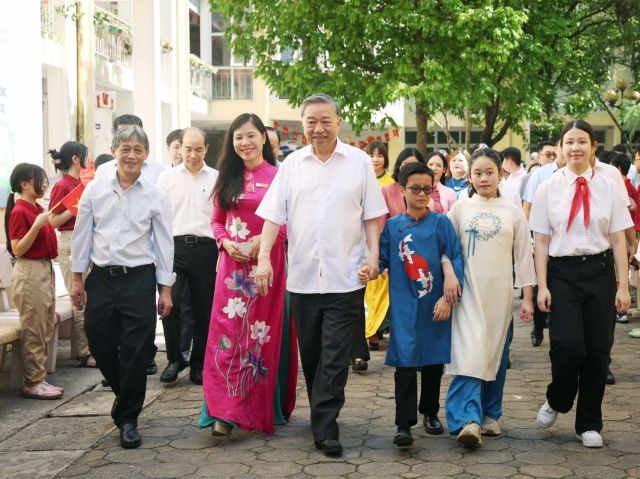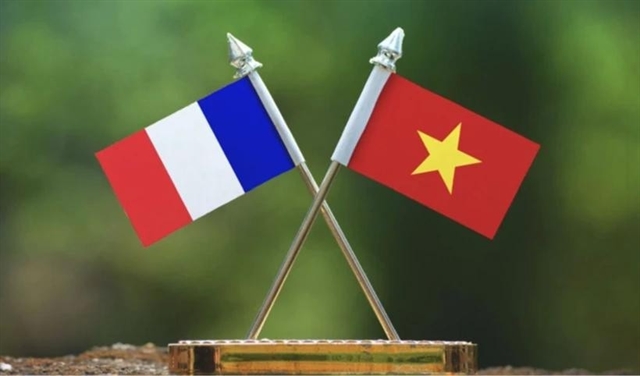 Opinion
Opinion

Mai Xuân Thành, Deputy Director-General of Việt Nam General Department of Customs, speaks to Thời báo Kinh tế Việt Nam (Vietnam Economic Times) on reforms the department has done in recent times to ease the flow of goods and services across the border
 |
| Kim Thanh international border gate between Việt Nam’s Lào Cai Province and China’s Yunnan Province. — VNA/VNS Photo Quốc Khánh |
Mai Xuân Thành, Deputy Director-General of General Department of Việt Nam Customs, speaks to Thời báo Kinh tế Việt Nam (Vietnam Economic Times) on reforms the department has done in recent times to ease the flow of goods and services across the border.
In recent years, Việt Nam customs have made significant strides in reformation and modernisation of administrative procedures to facilitate cross-border trade. Could you give us a brief rundown of these efforts?
In 2018, Việt Nam customs authority continued to maintain stable operation of the e-Customs system VNACCS/VCIS (Việt Nam Automated Cargo Clearance System/Việt Nam Customs Intelligent Information System), which has now seen the participation of 99.65 per cent of enterprises currently working with customs agencies throughout the country.
Automated clearance done via the VNACCS/VCIS has helped cut the time needed to complete procedures.
Currently, green channel goods can be processed and cleared within 1-3 seconds, while goods in the yellow channel would not take more than two working hours.
The Việt Nam General Department of Customs officially deployed a project in October 2017 that allows for electronic payment and customs clearance around-the-clock. And 24 commercial banks have already taken part in the project.
Regarding the implementation of the national single-window, so far, 11 ministries have already brought 68 administrative procedures to the online portal, which has now processed more than 1.6 million documents and attracted the participation of more than 25,000 enterprises.
With regards to the ASEAN single-window (ASW), since January of 2018, Việt Nam together with Singapore, Indonesia, Malaysia has started to transit into live operation of the ASW for the electronic exchange of Certificate of Origin (C/O), form D, issued under the ASEAN Trade in Goods Agreement – which eases the customs process and reduce tax burdens.
Việt Nam is currently piloting the expansion of the exchange of this C/O form with three other ASEAN member countries – Brunei, Cambodia, and the Philippines.
94.5 per cent of customs’ public services (173 out of 183) have been made available at level 3 or above, where electronic forms could be filled and sent online, of which, 164 public services allow for e-payment (level 4). Since 2018, 95,000 forms from 13,800 enterprises and 179 individuals have been processed on our system.
With these results, how has customs contributed to the import-export performance of Việt Nam?
The implementation of modern clearance system brings up four issues.
First, there needs to be a strong legal basis for the promotion of information technology in customs operations, monitoring, and supervision. Accordingly, information exchange and transactions between customs agencies and the declarers would be conducted online, lessening the chances for corruption, and helping enterprises saving up money.
Second, we have made changes to existing protocols on customs declaration and document submissions, issued detailed certificates needed to be submitted, and processing time to ensure synchrony and compatibility when moving towards e-customs.
Third, we have revised or added a number of customs procedures to facilitate import-export activities and promote logistics and transport services.
Finally, we revised several regulations to enhance monitoring, prevent and intercept smuggling, trade frauds and create a fair business environment.
However, in order to meet the customs legal requirements, we need the co-operation from the business community.
In 2018, the customs general department has responded to 1,315 official requests and feedback from enterprises.
How has import-export businesses received the reforms?
With the aim of continuously enhancing customs capacity and State management efficiency, customs activities are closely connected to those of enterprises, the impact of any customs’ changes would be immediately felt by the enterprises and I could tell that the business community in recent times regarded our efforts with high appreciation.
In addition, we have also frequently held talks with enterprises to listen to their feedback on legal policies and mechanisms. Thanks to this, we could address their concerns, rectify bottlenecks or deal with reported corruption and harassment cases in a timely manner.
It seems that enterprises remain quite passive in reporting their customs-related problems?
There are various channels for the business community to let their concerns and feedback be known by State agencies, and the business community is certainly getting more willing to speak up.
We continue to use technology applications to make communication between customs agencies and enterprises easier.
We would also appreciate it if enterprises put forward their suggestions and proposals in building and amending laws and regulations concerning import-export activities to attain fairness, transparency, practicability and ease in the implementation of legal documents. — VNS




